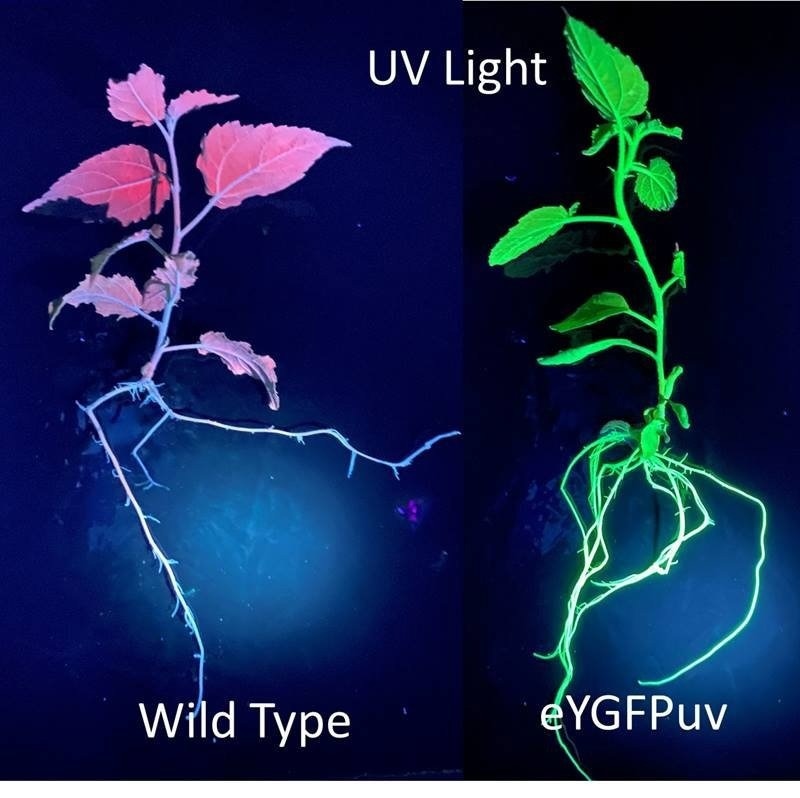Reviewed by Danielle Ellis, B.Sc.Oct 10 2022
Green fluorescent protein (GFP) is frequently used by biologists to observe cellular activity. Scientists discovered GFP, a protein that transforms light from one color into another, in jellyfish. Researchers can determine whether or where within cells those other proteins are produced by cells by attaching to them.
 The image shows the UV illuminated poplar plants. The ‘wild type’ on the left is the naturally occurring variant. The plant on the right contains the eYGFPuv reporter and glows green under UV illumination. Image Credit: Xiaohan Yang, Oak Ridge National Laboratory
The image shows the UV illuminated poplar plants. The ‘wild type’ on the left is the naturally occurring variant. The plant on the right contains the eYGFPuv reporter and glows green under UV illumination. Image Credit: Xiaohan Yang, Oak Ridge National Laboratory
This demonstrates how genes are delivered to and used by cells. The issue is that this frequently necessitates expensive tools, like fluorescence microscopes, and it might take a lot of time. Researchers explain how a particular variety of GFP can be utilized to allow people to visually observe protein synthesis in this study.
The researchers were able to see GFP production utilizing a simple black light to give long-wave ultraviolet (UV) radiation by altering the genes of plants.
The Impact
The study reveals using only the unaided eye and a black-light flashlight real-time imaging of cellular and molecular activities in a variety of plants. This will make screening for research and development purposes and the ongoing observation of molecular activities in mature plants quick and economical.
Summary
To create a fast, easy, and affordable test for analyzing gene delivery and gene expression, reporter genes are linked to other genes of interest. These reporters have been a crucial component of live-cell imaging for a very long time.
The creation of UV-visible fluorescent reporters has made imaging and analysis more widely available today. Researchers at Oak Ridge National Laboratory conducted this study to improve the effectiveness of these reporters in two woody plant species (poplar and citrus) and two herbaceous plant species (Arabidopsis and tobacco).
The researchers showed that strong fluorescence could be recorded using either a fluorescence microscope or UV light after creating and developing a GFP UV reporter protein (eYGFPuv) that offers improved signals for all tested plant species.
Furthermore, without the use of special emission filters, this UV-excitable reporter can be examined at a variety of scales, from sub-meter level seedlings to entire plants.
For instance, the researchers showed how this new reporter might enable quick assessment of transformation efficiency in plant systems using a simple UV flashlight. This newly created GFP-UV reporter will become a useful tool for a variety of applications in plant science research as a result of these increased capabilities.
Source:
Journal reference:
Guoliang, Y., et al. (2022). Expanding the application of a UV-visible reporter for transient gene expression and stable transformation in plants. Horticulture Research. doi.org/10.1038/s41438-021-00663-3